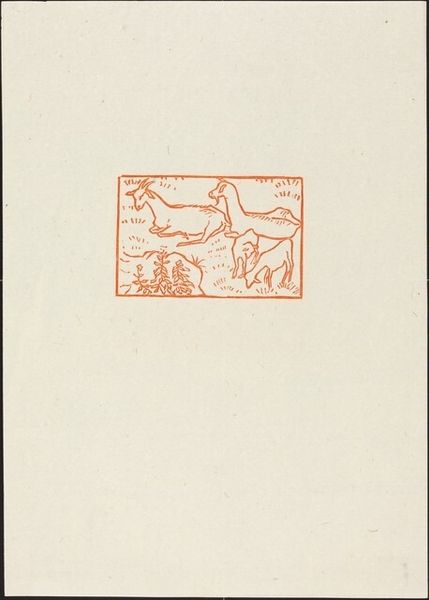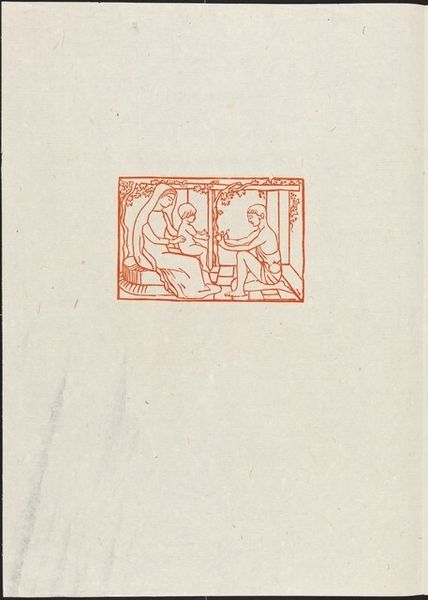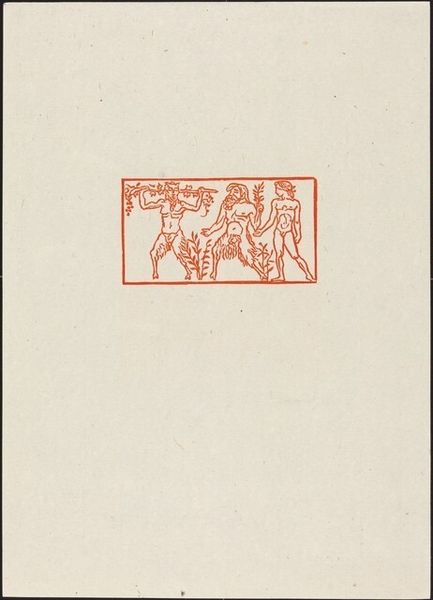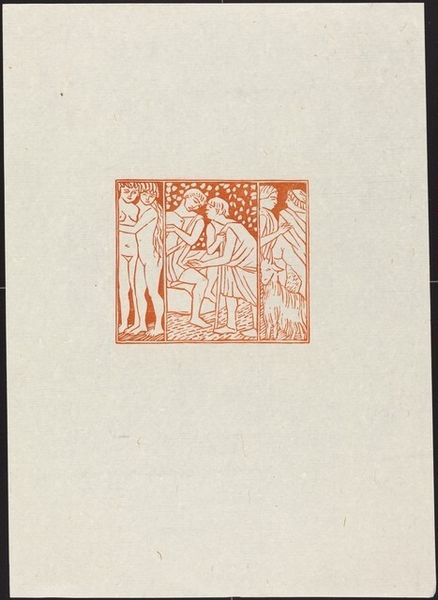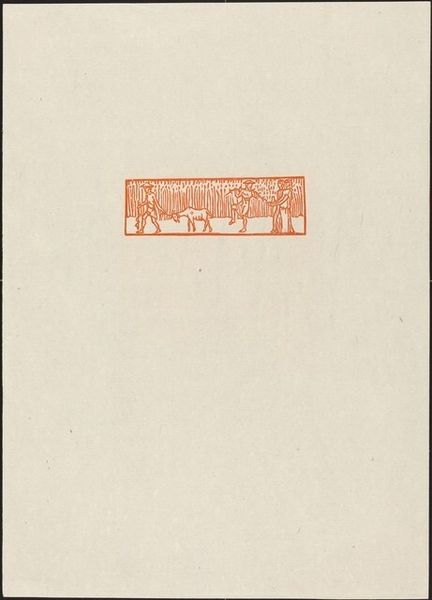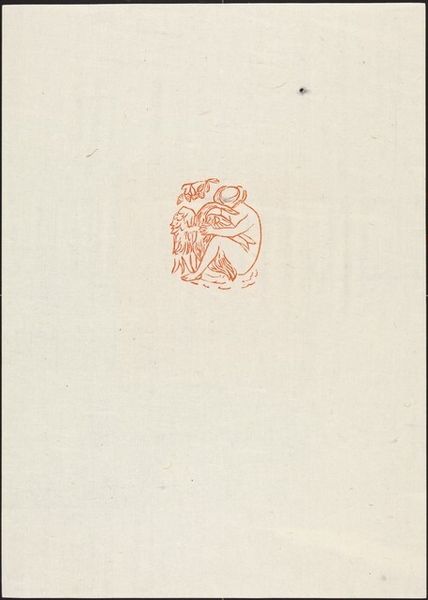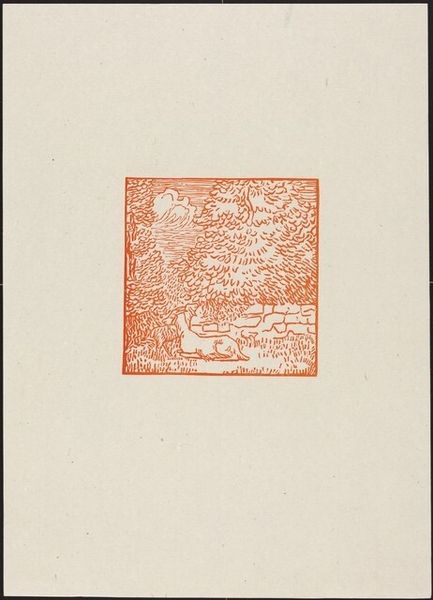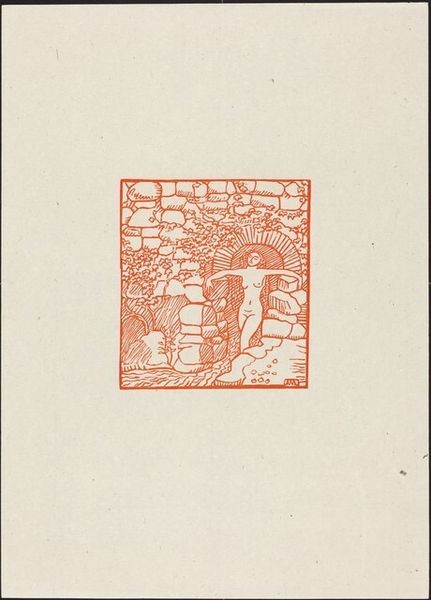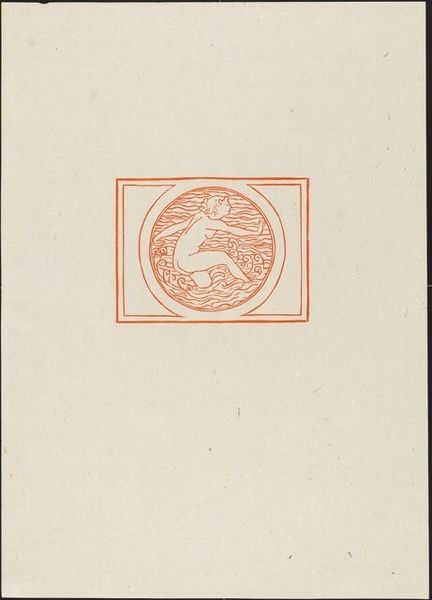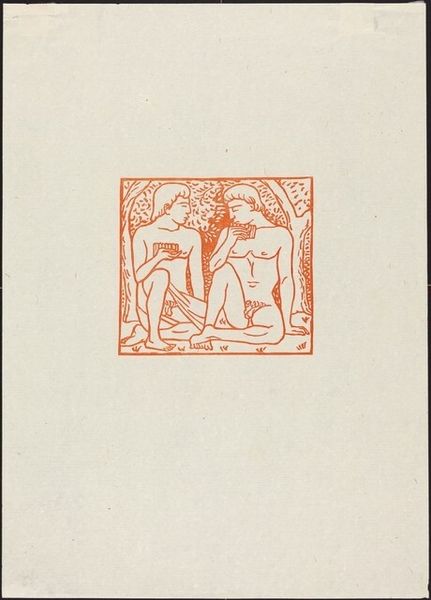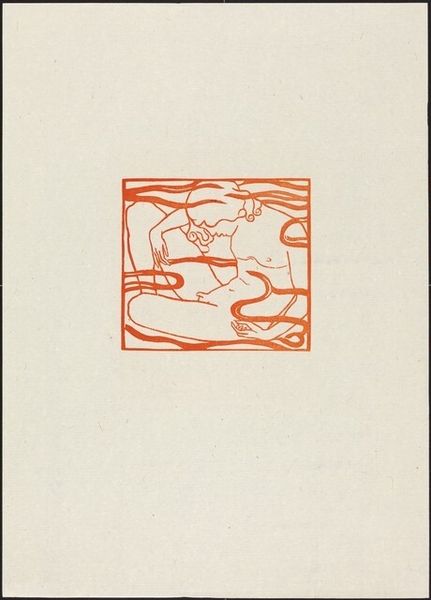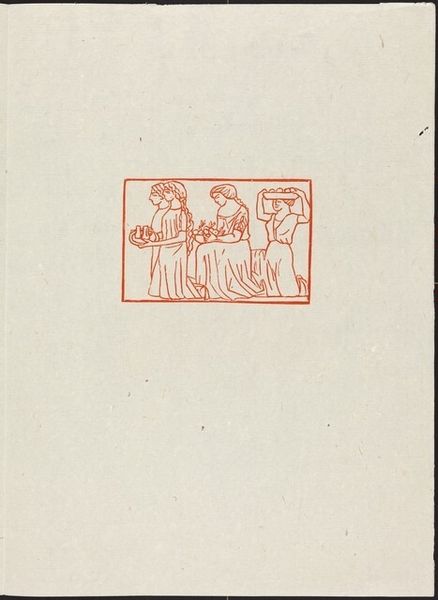
First Eclogue: Meliboeus and Tityrus (Melibeet Tityre) Possibly 1926
0:00
0:00
drawing, print, etching, paper, ink
#
drawing
#
narrative-art
# print
#
etching
#
landscape
#
figuration
#
paper
#
ink
#
genre-painting
Copyright: National Gallery of Art: CC0 1.0
Curator: Well, hello! Here we have Aristide Maillol's etching, possibly from 1926, titled "First Eclogue: Meliboeus and Tityrus." It is an ink print on paper, and as the title suggests, the artwork appears to explore a pastoral narrative. Editor: The use of a warm sepia ink is immediately striking; it evokes a sense of antiquity, doesn’t it? And the figures, enclosed within the rectangular border, feel carefully posed, almost like a tableau vivant. Curator: Yes, there's an intentional archaicism there. The scene, reminiscent of Virgil's pastoral poems, presents us with a shepherd reclining as he gazes up toward another figure standing playing an instrument, evoking the timeless themes of loss and displacement alongside artistic inspiration and creativity. The shepherd might represent the uprooted farmer, Meliboeus, and the musician could stand for the fortunate Tityrus. Editor: Notice how Maillol uses very simple, clean lines? The limited hatching gives the landscape and the bodies a solid form, almost sculptural, without the interference of complex detailing. It’s as if he's stripping the scene to its very essence. Curator: Precisely. It creates a timeless quality but also allows us to read contemporary resonance. The pastoral tradition has always functioned as a vehicle to represent more complex states. Perhaps, Maillol asks, how does creativity interact with stability and change? Editor: Looking at it from a formal angle, I find that the compact composition strengthens this effect. The figures fill most of the available space within the frame, adding to a sense of grounded monumentality. Curator: Absolutely, it pulls at a collective memory. From antiquity to the present, artists have always reached for the natural world and artistic practice in response to cultural instability and forced migrations, and there’s such poignancy in witnessing these traditions morph. Editor: This little scene vibrates with all sorts of art-historical significance, doesn't it? Curator: Indeed. From myth and memory, through the formal precision, and to a contemporary meditation on art's capacity, it all converges beautifully here. Editor: A concise landscape imbued with a world of feeling.
Comments
No comments
Be the first to comment and join the conversation on the ultimate creative platform.
